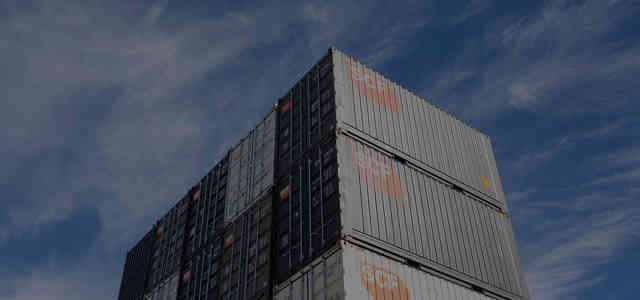

IICL Repair Criteria
IICL Regular Maintenance Requirements
- Inspect the containers for damage and/or wear and tear on a regular basis, minimum of once every sixty days.
- Repairs must be undertaken in accordance with IICL standard. Upon de-hire, SCF will inspect any repairs completed to the unit/s while on hire to ensure it meets the criteria of IICL standard. Any repairs undertaken that do not meet this standard will be charged accordingly by SCF.
- In particular, the following maintenance is required on a regular basis:
- Lubricate all hinges and doors
- Inspect for corrosion. Prepare and paint areas of corrosion or areas where paint has been removed
- Maintain door seals in wind water tight condition
- Inspect and repair as required any damage to under structure, in particular the fork pocket area
- Inspect the roof area paying particular attention to Paint and repair as required
- Maintain records of inspection and maintenance work carried out on the containers. These records are to be made available to SCF Group.
- All units (including Dangerous Goods Containers and Tanks) need to be returned cleaned and with no product If units are returned dirty or with product residue, a current SDS must be provided to SCF at time of de-hire. Units will be cleaned by SCF through an approved third party cleaner at Lessee costs. Transport charges will also apply.
Responsibility for Repair of Damage, Wear and Non-Conforming Repair
llCL does not specify the responsibility (including liability to pay) for repair of any damage, wear or non-conforming repair conditions under any circumstances. Responsibility for repair is strictly a contractual matter between owners and lessees, depots and their customers and any other combination of parties to an on-hire, off- hire, or other interchange or joint transaction.
Types of Damage
Listed below are many (though by no means all) types of damage, which may or may not be repair worthy.
Those types whose meaning is not self-evident are further defined. Note that the corrosion, paint failure or destruction of markings that accompanies damage is also considered "damage."
- Bends.
- Bows.
- Breaks.
- Burns.
- Cargo debris or dunnage accumulation inside the container.
- Condensation or standing water.
- Contamination-hazardous. (NOTE: if the contaminating substance's unknown, the inspector should segregate the container and contact the redelivery agent immediately to establish the type of contaminant present and the appropriate method of treatment.)
- Contamination-non-hazardous.
- Corrosion or other defect due to contact with foreign substances.
- Cracks.
- Cuts or tears.
- Dents.
- Dimensions beyond ISO and llCL tolerances.
- Failure in door operation due to racking or deformation of door hardware.
- Floor warping, expansion, or delamination due to excess moisture.
- Holes.
- Infestation.
- Loss of removable components.
- Miscellaneous labels, port stickers, graffiti or other markings not appearing on the container when originally received.
- Persistent odour.
- Scratches and gouges.
- Soil, sand, mud or other residue or dirt.
- Stains.
- Tape or glue attached to container surfaces.
- Vandalism related defects.
Damage frequently results from the improper handling or use of the container. Some of these defects can affect the structural integrity, dimensions (internal or external), water tightness or certification requirements of the container. The user is expected to exercise reasonable care in operating the container. In general, defects resulting from failure to do so are considered “damage."
Types of Wear
The following defects are considered wear, and due to inevitable, continuous deterioration not reasonably avoidable by the user. Note that such defects are considered to be damage if they result directly from a repair worthy event of damage or misuse of the container. This list is not necessarily complete; owners should be consulted for further guidance.
- Corrosion of metal components not due to contact with foreign substances.
- Delamination or rot of wooden components, such as general deterioration of floors, including expansion, shrinkage or warping arising out of normal use.
- Colour fading or adhesion failure of decals.
- Loose or missing parts or markings (except those that are normally removable), in the absence of evidence of accompanying damage.
- General paint failure or fading not due to contamination
- General wear, deteriorations or surface corrosion of corner fittings.
- General deterioration at door gaskets and fittings, including loose and corroded fittings or loose fittings arising from normal deterioration of doors (nut not including racking, overloading or improper door operation).
Regular Maintenance Requirements Tank Containers (Chemical & Powder Tanks Only)
- All on/off hire costs are payable by the Lessee including lifts, on and off hire surveys, cleaning and repairs necessary to return the tank to an operational condition as per the current IMDG/ISO/AS regulations and ITCO 2008 repair standard manual.
- ITCO 2008 – Fair wear and tear is the age related deterioration of the container or any of its component parts while being properly maintained and used for its intended purpose. Any deterioration resulting from improper use, improper maintenance is not “Fair wear and tear”. Replacement of leaking or contaminated seals and gaskets is a normal operating requirement and is not “Fair wear and tear”.
- ITCO 2008 – It is the absolute responsibility of the user to ensure that the tank container complies with regulations or material requirements specific to the cargo, to the method of carriage or to the route over which the container is transported. It is also the Lessee’s responsibility to ensure that the container complies with the International Convention of Safe Containers (CSC), the customs conventions on containers and all other applicable conventions, laws, regulations and government requirements.